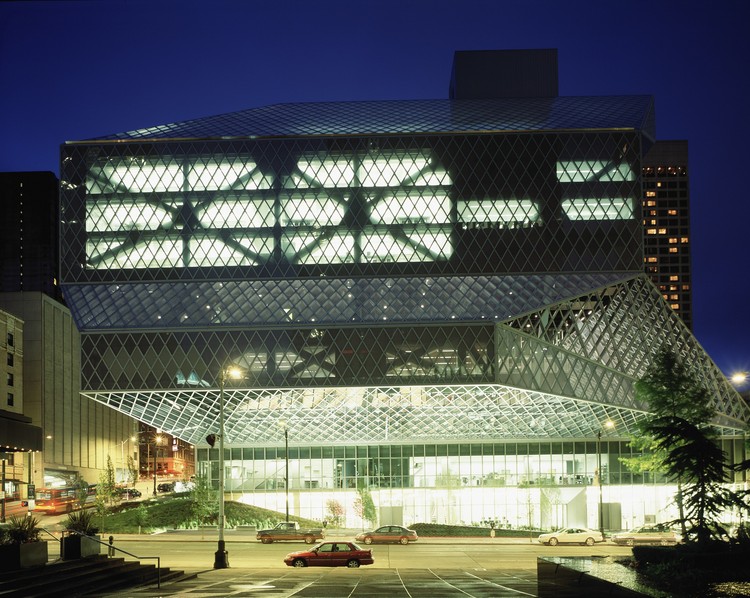
- Area: 38300 m²
- Year: 2004
-
Photographs:Philippe Ruault
-
Manufacturers: RENSON, Bomel Construction Company, Canron Western Construction, Electrical Systems, Energy Labs, Glazing Systems, Henkel, Mechanical Systems, Metal Framing and Drywall, Miscellaneous Iron & Ornamental Metal, The Erection Company
-
Consultants: Arup, Bruce Mau Design, Dewhurst Macfarlane and Partners, Front, HKA, Hoffman Construction Company, Inside Outside, Jones & Jones, Kugler Tillotson, McGuire, Michael Yantis, Pielow Fair, Quinze & Milan, Seele, Magnusson Klemencic, Davis Langdon

Text description provided by the architects. The Seattle Central Library redefines the library as an institution no longer exclusively dedicated to the book, but as an information store where all potent forms of media—new and old—are presented equally and legibly. In an age where information can be accessed anywhere, it is the simultaneity of all media and, more importantly, the curatorship of their content that will make the library vital.

































































Stability_Diagram.jpg?1461818642)